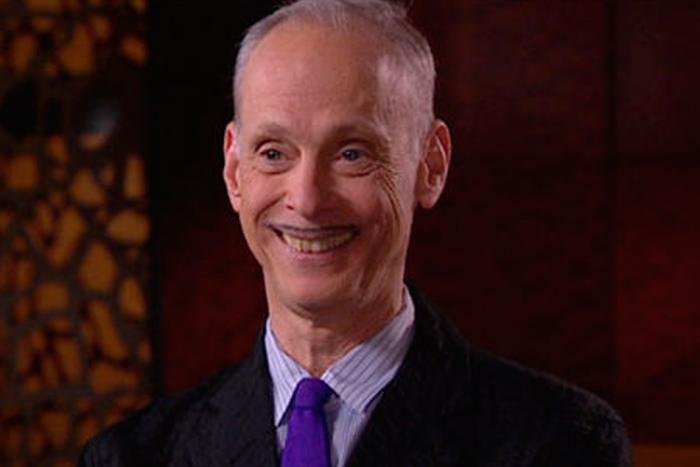You can find grainy, black-and-white footage on YouTube of a man in a polka-dotted unitard striking erotic poses to a Debussy flute solo. A string of black-haired women creep sideways to his left, their arms held stiffly in Egyptian zigzags like the marble figures on a bas relief. When the man is deserted by the woman he desires, he lies down on her discarded veil and, laughing silently, appears to have an orgasm. This is what ballet looked like in 1912.
When the Ballet Russes’ L’Après-midi d’un faune debuted in Paris before World War I, it alternately stirred and scandalized, as the radical is wont. The sculptor Rodin was exhilarated. The French paper Le Figaro called the choreography bestial and filthy. The critical pendulum swung for a few more years until an emerging consensus credited the company with freeing ballet from the constraints of classicism and delivering a groundbreaking aesthetic ready to take on the modern age.
If I imagine myself sitting in the audience at Paris’ Châtelet Theatre in 1912, what I’d like to think I’d feel—after all the wonder and excitement—would be a kind of flat-out relief. Finally: here was a ballet for grown-ups. Diaghilev had cast away the nineteenth century’s childish narratives and hokey village scenes to create a work that contemplated the relationship between content and form, while expressing what was delicate and ineffable about human feeling and desire. It would be a bit like reading Virginia Woolf after a lifetime of Henry Fielding. (In fact, the Bloomsbury Group were big fans of the company; Woolf saw them perform several times at Covent Garden.)
Ballet had lagged behind other artistic forms in its ability to reflect, refract and revolutionize contemporary aesthetic mores. Diaghilev changed this: he saw the medium as the most sumptuous integration of the visual, the corporeal and the musical, making it particularly suited to address modernist preoccupations. What could better express a destabilization of meaning, a dip into the unconscious, the abstract feeling of time, than a reactive human body in symbiosis with music, emotion and design? Diaghilev wasn’t interested in decoration; he pursued a total art not unlike Wagner’s Gesamtkunstwerk, where all aesthetic elements united into a dynamic and streamlined whole. Music and set could never be superfluous or disconnected. Scores were commissioned from the most notable twentieth-century composers: Debussy, Ravel, Stravinsky, Satie, Prokofiev, Poulenc and Strauss. As designers, Diaghilev hired Picasso, Matisse, Jean Cocteau, Coco Chanel, Dali, Miró, and Utrillo.
If I imagine myself sitting in the audience at Paris’ Châtelet Theatre in 1912, what I’d like to think I’d feel—after all the wonder and excitement—would be a kind of flat-out relief. Finally: here was a ballet for grown-ups.
When you love a piece of art, it’s typical to want to share the work with someone else as though the act of sharing can deepen, or have you relive, the intensity of the experience. But I rarely feel that way about ballet because I worry that there’s something remote—even cultish—about its beauty. If it’s a plotless, contemporary ballet, I assume that enjoyment requires a modicum of technical understanding which, in reality, few people possess. I once showed a boyfriend a treasured clip of Sylvie Guillem dancing a Forsythe solo, and his pleasant ambivalence felt like icy fingers on my heart. If, on the other hand, it’s Giselle or The Sleeping Beauty, I’m so embarrassed by the painfully dated village scenes—where “character artists” prance around like lunatics and “peasants” clap their hands like children—that I’ll yearn to place my hand over my companion’s eyes. So I usually find myself at the ballet alone, enjoying what seems, at times, like the most pure and improbable beauty, while stifling the aesthetic questions of unity and coherence that I would ask of any other medium. If it’s a particularly archaic production, with sequences of gorgeous dancing nonetheless, I allow myself the feeling of being in a museum instead of a modern auditorium, gazing curiously at a striking artefact instead of my living contemporaries making art before my eyes.
Of course, this isn’t a problem singular to ballet: we get mawkish humour and implausible scenarios at the opera, among other places. But in the dance world, most innovation in the past hundred years has taken place in the realm of modern dance, and some schools of thought (the Isadora-Duncan school, for example) hold that ballet itself is obsolete. For them, the problem goes deeper than the village-scenes; it lies in a technique that is inherently stiff, unnatural, repressive, and representative of a world that no longer exists.
I disagree, and raise them with productions like Benjamin Millepied’s Daphnis et Chloé—at the Paris Opera Ballet until June 8. Sitting in the audience, I had that sense of shock and unstructured joy that often accompanies the most heightened experiences of art. If I were to describe Daphnis et Chloé to a non-ballet-goer, I'd ask her to imagine a climactic sequence on a giant movie-screen where the action becomes so riveting, so breathless, so increasingly involving, that it is impossible to look away. Then I’d ask her to add to that spectacle a sense of vanishing—the awareness that what she’s watching is not recorded but has materialized before her only to immediately disappear. Then, consider that this pure emergence of gesture has no explicit signification—what sense can be attributed to movement?—and is, on top of that, largely impossible to name. The experience of this accumulating, unnameable transience forces the spectator into an intoxicating present-tense, where the event is seen and felt, but never contemplated. Ballet is not aria or monologue; it moves quickly even when it’s slow.
Maybe it’s germane that Daphnis et Chloé was an early Ballet Russes work, although Millepied has entirely redone the choreography. He’s kept Ravel’s gorgeous, hypnotic score, which has the layered, impressionist sound of orchestral improvisation. (Ravel never feels old.) The stage is stark, bold coloured shapes descend from the sky, the diffuse light looks like Aegean sunshine, and the dancers, in ethereal white dresses, move with a fluid but exacting grace. When Daphnis and Chloé are reunited after prolonged separation, they pause in the midst of a tussling pas de deux. Chloé bends towards the ground in a deep, relinquishing backbend, as though she is giving more of herself to her lover with every triggered vertebrae. When there is nothing left to give, her body hangs like the curve of the moon.
The stage is stark, bold coloured shapes descend from the sky, the diffuse light looks like Aegean sunshine, and the dancers, in ethereal white dresses, move with a fluid but exacting grace.
Dance has long been discussed in academia as the exception to other aesthetic forms, the marginalized medium that never fits well among the other arts. The French philosopher Alain Badiou claimed that dance is not art because “it is the sign of the possibility of art as inscribed in the body.” To him, dance isn’t “liberated bodily impulse” but the body’s constant disobedience to this impulse, through its subjugation to technique. But I can’t buy this as a real point of distinction, because all artistic mediums require an acquiescence to preset systems. Surely the violinist who vivifies notation by repositioning her fingers in quick succession on the string is also deferring to an inflexible technique. And then there’s that other exalted art known as literature, which depends upon what might be the most complex, semiotic system of all.
In a world where it would sound almost barbaric to announce that you don’t like music (or, for that matter, literature, painting, film), it’s perfectly reasonable to claim that you don’t like dance. Maybe there’s something about ballet in particular that feels excessive, and for the same reasons that Diaghilev saw so much potential in the form. Dance synthesizes all the textless disciplines, a boon for innovators like Balanchine, Graham, Cunningham, Limon, but overwhelming—even embarrassing—in less capable hands. And then there is its shocking bodyliness: life’s big emotions exposed by a live, mostly undressed person moving around in front of you. The intimacy can be staggering. Dance is capable of lavish extravagances (orchestras, choruses, haute-couture tutus) but it never escapes its elemental nakedness. All it really needs is empty space.
I’ve always thought that a work of art must somehow, implicitly, ask a question of the form in which it’s realized. Sometimes this question has to do with testing the boundary of the form, but other times it’s simply rhetorical curiosity at the way an inimitable experience has been made from long-existing tools. Jennifer Homans recently argued in The New Republic that the current crisis in ballet is on account of the fact that emotion has been sapped from choreography, leaving dance that is all show; all form. While I agree with her in principle, I don’t like dwelling on the centrality of emotion in art, because I worry the discussion loses rigour in the process. Instead, I wonder if we can say that ballet has stopped asking questions of itself. It has stopped tacitly examining its own singularity and importance—why whatever it is expressing can only be communicated by human bodies moving in an extraordinarily demanding, four-hundred-year old technique. And when art stops insisting on its irreducibility it loses relevance. It can only be of interest to those already part of the club.
But there are questions being asked onstage in Paris right now—they are about love, loss, sensuality, betrayal and what each of these can do to the curve of an arm in the air, to the suspension of a leap, to the building intensity between an entangled couple. With Millepied set to become the company’s artistic director in the fall, I hope the questions will continue.






